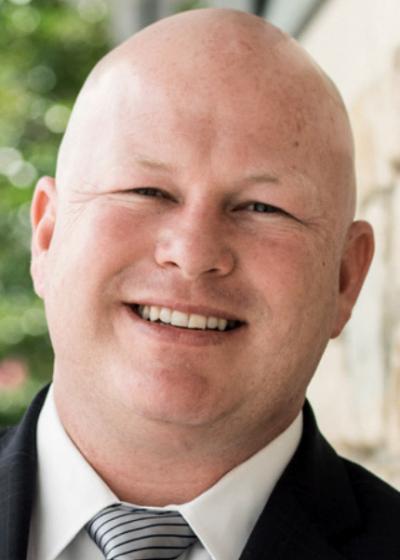

 On March 1, I wrote that a small number of SpaceX Starlink terminals had arrived in Ukraine, and they would be an important asset for distribution to selected government and resistance leaders and journalists. I didn't know who would get the terminals or how many there were, but it was a single truckload. A week or so later, we learned that two more shipments of terminals had arrived and fifty of them went to DTEK, a company struggling to repair Ukrainian electrical infrastructure. more
On March 1, I wrote that a small number of SpaceX Starlink terminals had arrived in Ukraine, and they would be an important asset for distribution to selected government and resistance leaders and journalists. I didn't know who would get the terminals or how many there were, but it was a single truckload. A week or so later, we learned that two more shipments of terminals had arrived and fifty of them went to DTEK, a company struggling to repair Ukrainian electrical infrastructure. more
 Do you have information about DNS security or routing security that you would like to share with the global community? Have you developed a new tool or system in this area? Do you have results from a research project that you want to share with a technical community? If so, please consider submitting a proposal to the DNSSEC and Security workshop to be held at ICANN 74 in June 2022. more
Do you have information about DNS security or routing security that you would like to share with the global community? Have you developed a new tool or system in this area? Do you have results from a research project that you want to share with a technical community? If so, please consider submitting a proposal to the DNSSEC and Security workshop to be held at ICANN 74 in June 2022. more
 For companies with global aspirations, Russian has long been considered a "must support" language. These days, that is no longer the case. But even before Putin decided to invade Ukraine, the Russian language had been slipping, ever so slightly, in global website support. While support for Ukrainian has been steadily rising. I’ve been tracking the languages supported by the leading global brands for nearly 20 years and... more
For companies with global aspirations, Russian has long been considered a "must support" language. These days, that is no longer the case. But even before Putin decided to invade Ukraine, the Russian language had been slipping, ever so slightly, in global website support. While support for Ukrainian has been steadily rising. I’ve been tracking the languages supported by the leading global brands for nearly 20 years and... more
 On March 2, Russia covered the US flag on the Roscosmos Space Agency rocket that was scheduled to launch 36 OneWeb broadband satellites on March 5. The Russians made two obviously untenable demands -- that OneWeb guarantee that the satellites would not be used for military purposes and the United Kingdom government remove its investment in the company. OneWeb declined, and the satellites were removed from the rocket. more
On March 2, Russia covered the US flag on the Roscosmos Space Agency rocket that was scheduled to launch 36 OneWeb broadband satellites on March 5. The Russians made two obviously untenable demands -- that OneWeb guarantee that the satellites would not be used for military purposes and the United Kingdom government remove its investment in the company. OneWeb declined, and the satellites were removed from the rocket. more
 Domain Name System (DNS) Operators (Registries and Registrars) receive notices asking them to take action on a wide range of alleged technical and content-related abuses. However, there is a fundamental question of when it is appropriate to act at the DNS level and the evaluation of whether the alleged abuse meets a sufficient threshold for action at the DNS level. Additionally, given the volume of abuses occurring on the internet, existing resources, mechanisms, and protocols available in-house to Operators are in many cases insufficient to address abuses in a timely fashion. more
Domain Name System (DNS) Operators (Registries and Registrars) receive notices asking them to take action on a wide range of alleged technical and content-related abuses. However, there is a fundamental question of when it is appropriate to act at the DNS level and the evaluation of whether the alleged abuse meets a sufficient threshold for action at the DNS level. Additionally, given the volume of abuses occurring on the internet, existing resources, mechanisms, and protocols available in-house to Operators are in many cases insufficient to address abuses in a timely fashion. more
 Domain security is a critical component to help mitigate cyberattacks in the early stages - your first line of defense in your organization's Zero Trust model. According to the Cybersecurity and Infrastructure Security Agency (CISA), most cyberattacks - including ransomware and business email compromise (BEC) - begin with phishing. Although losses due to ransomware now exceed billions annually, most ransomware protection and response measures don't adequately address phishing risks in the early stages of an attack because they don't include domain security measures to protect against the most common phishing attacks. more
Domain security is a critical component to help mitigate cyberattacks in the early stages - your first line of defense in your organization's Zero Trust model. According to the Cybersecurity and Infrastructure Security Agency (CISA), most cyberattacks - including ransomware and business email compromise (BEC) - begin with phishing. Although losses due to ransomware now exceed billions annually, most ransomware protection and response measures don't adequately address phishing risks in the early stages of an attack because they don't include domain security measures to protect against the most common phishing attacks. more
 Leichtman Research recently released the U.S. broadband customer statistics for the end of the fourth quarter of 2021. The numbers show that broadband growth has slowed significantly for the sixteen largest ISPs tracked by the company. LRG compiles these statistics from customer counts provided to stockholders, except for Cox, which is privately owned. Net customer additions sank each quarter during the year. more
Leichtman Research recently released the U.S. broadband customer statistics for the end of the fourth quarter of 2021. The numbers show that broadband growth has slowed significantly for the sixteen largest ISPs tracked by the company. LRG compiles these statistics from customer counts provided to stockholders, except for Cox, which is privately owned. Net customer additions sank each quarter during the year. more
 Like 2020, the year 2021 saw exceptional conditions, with the persistence of the health crisis. As the registry for the .FR TLD, Afnic was well placed to observe the adaptation of French society to these exceptional conditions, particularly from the viewpoint of the digital transition process. Following on from a historical record in .fr domain name creations in 2020 (793,441), the 776,514 in 2021 have confirmed the take-up of digital benefits by French users, with registrations still up 12% as compared to 2019. more
Like 2020, the year 2021 saw exceptional conditions, with the persistence of the health crisis. As the registry for the .FR TLD, Afnic was well placed to observe the adaptation of French society to these exceptional conditions, particularly from the viewpoint of the digital transition process. Following on from a historical record in .fr domain name creations in 2020 (793,441), the 776,514 in 2021 have confirmed the take-up of digital benefits by French users, with registrations still up 12% as compared to 2019. more
 When it comes to the economy, the global supply chain was one of the biggest casualties of the COVID-19 pandemic. Port closures and soaring infection rates hampered logistics providers' ability to schedule deliveries and predict risks. In turn, manufacturers' demand projections were challenged, leading to empty shelves worldwide. A lack of shipping containers has affected supply chains, with shippers scrambling to find usable containers before they disappear into service. more
When it comes to the economy, the global supply chain was one of the biggest casualties of the COVID-19 pandemic. Port closures and soaring infection rates hampered logistics providers' ability to schedule deliveries and predict risks. In turn, manufacturers' demand projections were challenged, leading to empty shelves worldwide. A lack of shipping containers has affected supply chains, with shippers scrambling to find usable containers before they disappear into service. more
 The invasion of Ukraine by Russia on 24 February, and the events since, have shocked and horrified the world. The immediate focus must be on protecting the safety, security and human rights of the Ukrainian population. But we can already see how the war will also impact broader global events, discussions and behaviour, particularly relating to the digital environment. more
The invasion of Ukraine by Russia on 24 February, and the events since, have shocked and horrified the world. The immediate focus must be on protecting the safety, security and human rights of the Ukrainian population. But we can already see how the war will also impact broader global events, discussions and behaviour, particularly relating to the digital environment. more
 As we watch the Ukraine and Russia conflict over boundaries and territories, I chanced upon a YouTube video showing the region of Europe and how, for the last 1000 years, national boundaries and names of nations have changed where in 1142, you had nations like Muslim Spain, Kievan Rus. In 1143 the Kievan Rus included modern-day Ukraine and Crimea, and in 1163 bulk of Central and Southern Europe was the Holy Roman Empire... more
As we watch the Ukraine and Russia conflict over boundaries and territories, I chanced upon a YouTube video showing the region of Europe and how, for the last 1000 years, national boundaries and names of nations have changed where in 1142, you had nations like Muslim Spain, Kievan Rus. In 1143 the Kievan Rus included modern-day Ukraine and Crimea, and in 1163 bulk of Central and Southern Europe was the Holy Roman Empire... more
 I've often joked that I don't play computer games because I'm holding out for a holodeck. While that may sound ridiculously far-future, we're on the verge of seeing the web-based virtual reality that will be a major step towards a holodeck. There is already some awesome virtual reality software and games where a person can get immersed in another world using a headset. more
I've often joked that I don't play computer games because I'm holding out for a holodeck. While that may sound ridiculously far-future, we're on the verge of seeing the web-based virtual reality that will be a major step towards a holodeck. There is already some awesome virtual reality software and games where a person can get immersed in another world using a headset. more
 Telstra might regret having signed a commercial deal with London-based OneWeb as this company has now become a pawn in the war between Russia and Ukraine. Telstra agreed to host two OneWeb gateway Earth stations in Australia, one in the west and one in the north, which would also cover the APAC region, with a third Earth station currently under discussion for the east coast. more
Telstra might regret having signed a commercial deal with London-based OneWeb as this company has now become a pawn in the war between Russia and Ukraine. Telstra agreed to host two OneWeb gateway Earth stations in Australia, one in the west and one in the north, which would also cover the APAC region, with a third Earth station currently under discussion for the east coast. more
 According to a report just released by McKinsey & Company, we are on the verge of seeing a major shift to health care from home. The report says that as much as $265 billion in annual fees to Medicare and Medicare Advantage could shift to homes by 2025. We've already seen the start of the trend towards telemedicine. The spending on telemedicine was 38 times higher in 2021 compared to 2020. Most of that shift is obviously due to the pandemic. more
According to a report just released by McKinsey & Company, we are on the verge of seeing a major shift to health care from home. The report says that as much as $265 billion in annual fees to Medicare and Medicare Advantage could shift to homes by 2025. We've already seen the start of the trend towards telemedicine. The spending on telemedicine was 38 times higher in 2021 compared to 2020. Most of that shift is obviously due to the pandemic. more
 The Domain Name System has provided the fundamental service of mapping internet names to addresses from almost the earliest days of the internet’s history. Billions of internet-connected devices use DNS continuously to look up Internet Protocol addresses of the named resources they want to connect to - for instance, a website such as blog.verisign.com. Once a device has the resource’s address, it can then communicate with the resource using the internet’s routing system. more
The Domain Name System has provided the fundamental service of mapping internet names to addresses from almost the earliest days of the internet’s history. Billions of internet-connected devices use DNS continuously to look up Internet Protocol addresses of the named resources they want to connect to - for instance, a website such as blog.verisign.com. Once a device has the resource’s address, it can then communicate with the resource using the internet’s routing system. more
Sponsored byVerisign

Sponsored byVerisign

Sponsored byRadix

Sponsored byWhoisXML API

Sponsored byCSC

Sponsored byDNIB.com

Sponsored byIPv4.Global
